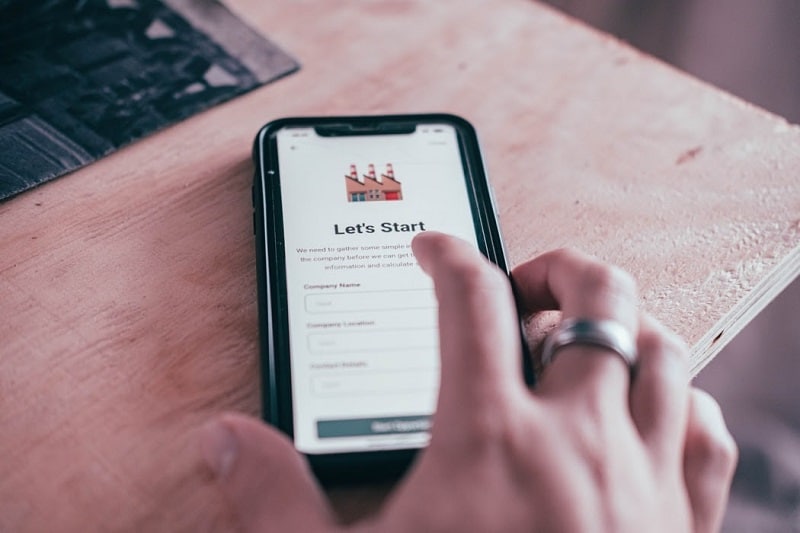
Americans spend 88% of their mobile time on apps. And that's a shocking statistic that most business owners have a hard time believing when they first see it.
But when you think about how much time you spend on Facebook, Gmail, or Instagram, it's much easier to understand why so much time is spent using specialized apps that provide a better experience and are better integrated with your device.
That's why forward-thinking companies are putting a strong emphasis on creating an app that meets their audience's expectations and conditions them to use it regularly.
Unfortunately, for every successful app, there are ten that are rarely used or not even downloaded. The average user has around forty apps on their phone but only uses about ten every day.
To increase your app's likelihood of succeeding, let's look at some of the most critical elements of developing and designing a mobile app you should consider.
Your Audience
While your audience isn't technically part of your app, it's the group of people your app was designed for. So it only makes sense to consider their needs and priorities when deciding which elements of app design to focus on.
After all, the main reason why people download an app of a business is to use their services or buy their products. If your app doesn't make these processes easier and more convenient, it won't serve a purpose, and you'll have a tough time getting anyone to download.
But how can you make sure that your app is aligned with the people you're designing it for?
Well, the simple answer is that you don't do that by making assumptions. Instead, you need to get out there and talk to the actual people you want to please, as that's the only way to make informed decisions that are the most likely to pay off.
If you want to collect a lot of data quickly, a great way to do that is to run surveys on your site or subscriber list, asking people what they'd like to see in an app, what features are important to them, and what apps they enjoy using.
For a more personal approach, you could even schedule a few interviews with your ideal customers, looking for ideas on creating an app that will actually solve problems and be a pleasure to use for the people you're trying to attract.
Finally, once the app is launched and live, add a way to leave feedback and report bugs. Your app won't be perfect at once, but if you listen to your audience and are willing to make adjustments, you will get to a point where your app becomes the go-to option for your audience.
User Onboarding

The first few days after a user downloads your app are absolutely critical. They can determine whether your app becomes a new favorite or is immediately forgotten and eventually deleted.
The key step to a successful user onboarding process is making sure that the user sees the app's value during their first visit. You need to build a path of least resistance, making the app as easy to use as possible and (even more importantly) making the core concepts simple and easy to grasp in a few seconds.
You can use visuals and quick guides for first-time users, showing them how various features work and where they can find what they're looking for.
You should also try to remove as many friction elements as possible on every step of the app user journey. That means minimizing any signups, forms to fill out, and agreements to check unless they are absolutely essential.
Finally, if you want your users to onboard an app and use it, you should avoid overwhelming them with too many features. Sometimes, less is more, and that's usually true for apps. It won't matter how many powerful features you can offer if the users just don't end up using them.
The Builder
To make your app a reality, you will need to build it. And that's a realization that gets many companies nervous about app development costs that can eat up thousands of dollars without producing anything valuable.
Luckily, app development has never been more straightforward than it is today. By using a simple and intuitive app builder, you can create beautiful-looking apps without any coding, powerful features, and a wide range of plugins that will provide any functionality you could possibly need.
Sure, you could hire an app developer or an entire team and work with them for months trying to build your app from scratch. But unless you have very unique and specific requirements that can't be met by leading app builders today, the budget and resources taking this approach would require is simply not worth it.
In most cases, you can create a unique and fully functional app with a builder, especially if you follow sound principles of UX design and develop an app according to your audience's needs.
Functionality
Finally, when developing an app, you must identify the reason why your customers should use it. There are probably countless apps already available in your niche, many of which have been refined to perfection over many years.
So you should ask the question of what problem does your app solve to make it appealing to your audience. Sure, at least on some level, your app is an extension of your brand, which means that if people love your brand, they might consider the app just because of that.
But if you really want your app to be successful, you need to think beyond improving the user experience and make your app the distinguishing feature that sets your brand apart.
Since the majority of today's eCommerce sales come from mobile, it's only natural that the brands that can create the most convenient and helpful app will gain a considerable advantage over the competitors.
Few people like to struggle through the purchase process on a mobile website, so having a native app to simplify various processes and make buying or getting information easier will serve you when you're trying to build a loyal customer base.
So, think about your app's core features and use the information you gain about your audience’s needs to make those features as strong and compelling as possible.
If other stores have complicated checkout processes, introduce an approach that eliminates all the hassle. If other apps don't have a lot of information, create an extensive knowledge base that educates your buyers and helps them make the right choice.
Whatever approach you decide to focus on, if you put the needs of your customers first and don't just copy what others are doing, you will be well ahead of most of the competition.
Final Words
Designing a mobile app can have a significant impact on your sales potential and customer satisfaction. But creating an app your customers will actually want to use is not an easy process.
However, if you follow the steps listed above, you will have an easier time making informed decisions and can create a functional and useful app on a relatively affordable budget.










